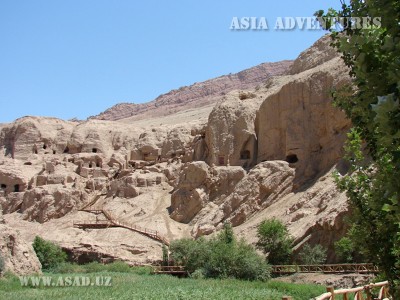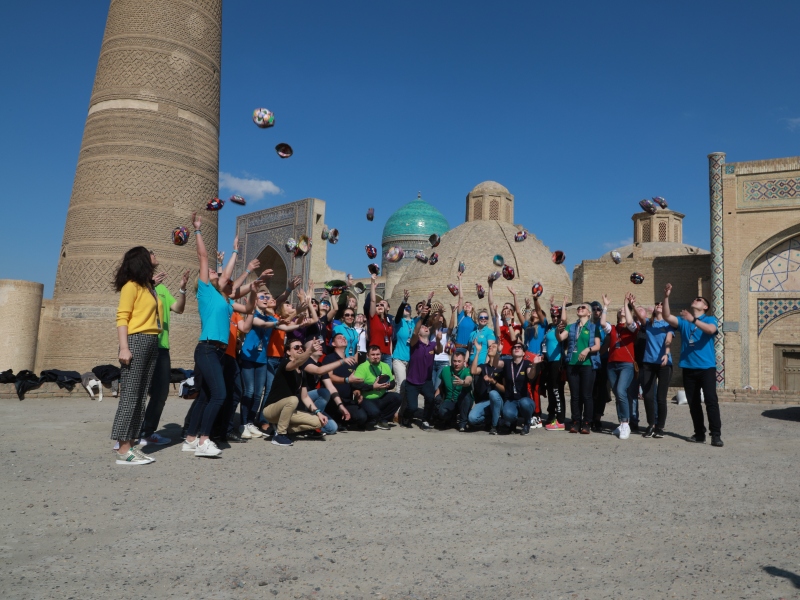
The famous Bezeklik cave temples of Thousand Buddhas are situated in the vicinity of Turfan in Mutos gorge, it is one of the largest Buddhist monuments in China, and this is the place of birth and spreading of Buddhism in China (VI cent. Gaochang kingdom). You can see series of niches cut into the cliffs on the steep walls of the gorge Muto. The figures of Buddhist saints are in niches. "Baytsziklik" in Uighur means "well decorated place." Most of the caves are dug in the rock, only some of them have special mud walls and covering, but it is obvious that in the construction of the caves it is observed a certain order. In general, the cave-temple ensemble looks very impressive. Today, 83 caves are survived. In 40 of them fresco paintings have been preserved, the total area of frescoes is 1200 sq m. The construction of Baytsziklik cave temples dates from the VI century, when there was the kingdom of Gaochang. During the Tan dynasty, the temples were known as "the cave of pacification of the border", and numerous pilgrims came here from all sides. At one time Baytsziklik caves were declared the Tsar"s temple. The majority of frescoes covering the walls and ceiling of the caves belong to this period. In the early XX century, foreign archaeologists who visited it, took parts of the precious frescoes. Currently, the Turfan collection of fresco painting is presented in Berlin, British, Saint-Petersburg museums.

 Centralasia Adventures
+998712544100
Centralasia Adventures
+998712544100




 Posted by
Posted by

